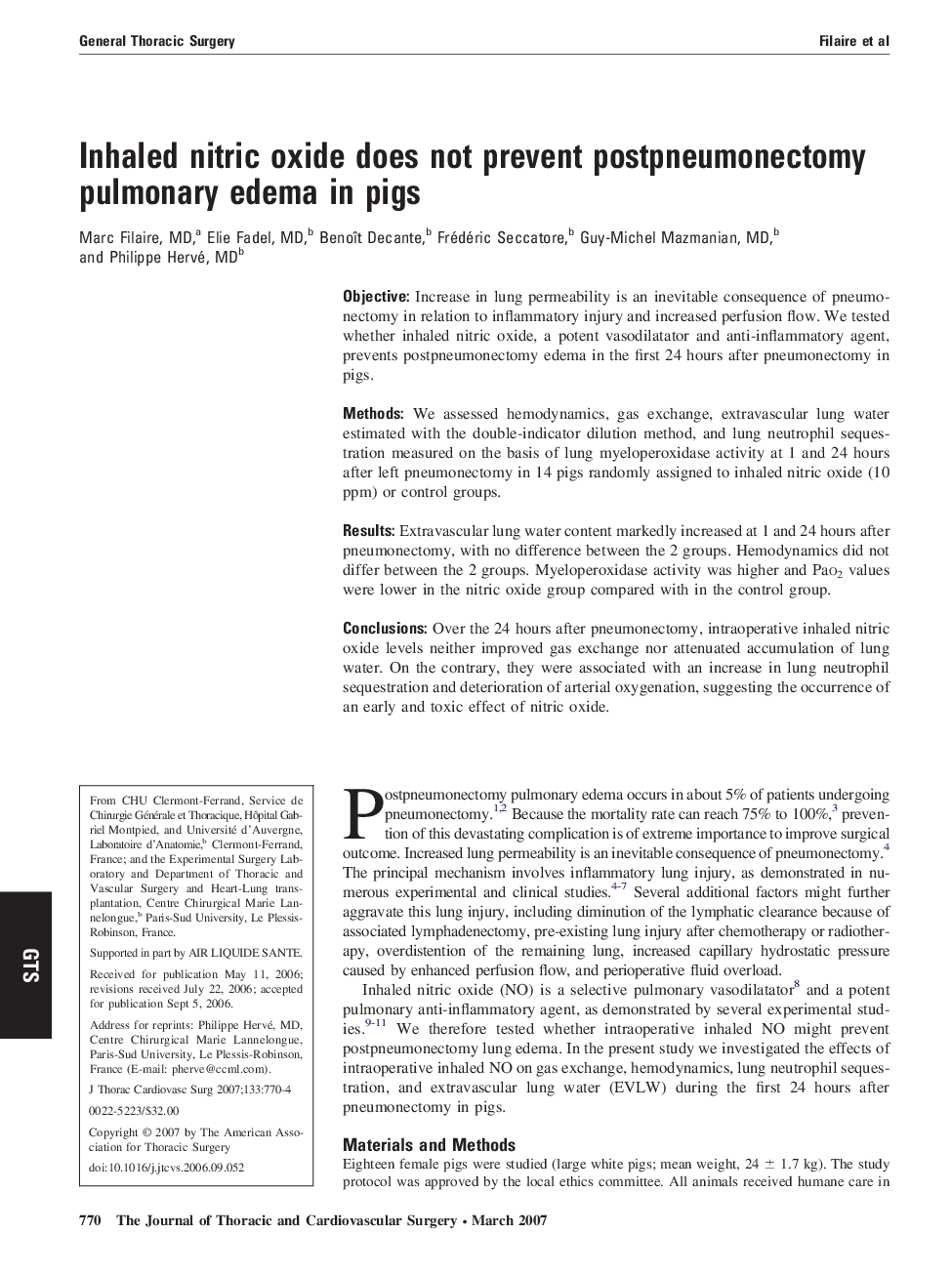| Article ID | Journal | Published Year | Pages | File Type |
|---|---|---|---|---|
| 2986277 | The Journal of Thoracic and Cardiovascular Surgery | 2007 | 5 Pages |
ObjectiveIncrease in lung permeability is an inevitable consequence of pneumonectomy in relation to inflammatory injury and increased perfusion flow. We tested whether inhaled nitric oxide, a potent vasodilatator and anti-inflammatory agent, prevents postpneumonectomy edema in the first 24 hours after pneumonectomy in pigs.MethodsWe assessed hemodynamics, gas exchange, extravascular lung water estimated with the double-indicator dilution method, and lung neutrophil sequestration measured on the basis of lung myeloperoxidase activity at 1 and 24 hours after left pneumonectomy in 14 pigs randomly assigned to inhaled nitric oxide (10 ppm) or control groups.ResultsExtravascular lung water content markedly increased at 1 and 24 hours after pneumonectomy, with no difference between the 2 groups. Hemodynamics did not differ between the 2 groups. Myeloperoxidase activity was higher and Pao2 values were lower in the nitric oxide group compared with in the control group.ConclusionsOver the 24 hours after pneumonectomy, intraoperative inhaled nitric oxide levels neither improved gas exchange nor attenuated accumulation of lung water. On the contrary, they were associated with an increase in lung neutrophil sequestration and deterioration of arterial oxygenation, suggesting the occurrence of an early and toxic effect of nitric oxide.
